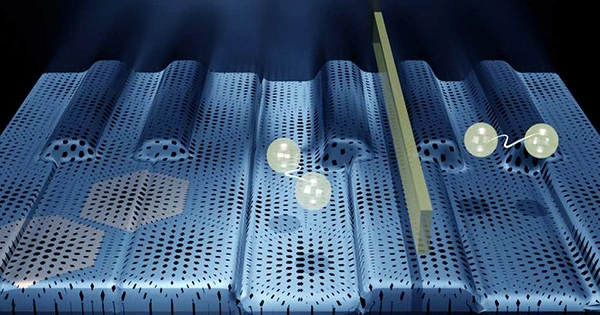Ferroelectric 2D materials have a characteristic that could be used as a feature in future technology, according to materials scientist Boris Yakobson of Rice University and colleagues.
According to research published in ACS Nano, single-layer ferroelectric materials can be controlled to function as a switch or even a motor at the nanoscale because they bend in response to an electrical stimulus.
Single-layer or two-dimensional materials are usually composed of a single layer of atoms, which results in a thickness of only a few nanometers. Due to their usefulness in applications spanning from consumer electronics to medical and industrial technologies, they have attracted a lot of interest in recent years due to their physical, electrical, chemical, and optical properties.

2D elements are “extremely thin and flexible,” according to Yakobson. This results in a surprising spontaneous, active bending behavior in single-layer ferroelectrics.
“The novel finding of this research is that the ferroelectric state and the bending or flexing of the material are connected or coupled. This research combines a theoretical application perspective with the discovery or prediction of a basic property of a class of 2D materials.”
Negative and positive ions can shift to create spontaneous polarization in ferroelectric materials, which causes the ions to separate according to their electrical charge.
The difference between the atoms is “interesting,” says Jun-Jie Zhang, a Rice postdoctoral research associate and the study’s primary author. “The layer symmetry is broken because some of them are bigger and some smaller,”
The bigger atoms are driven to one side of the 2D material layer by polarization, while the smaller atoms are driven to the opposite side. The surface of the material bends in the ferroelectric state due to the asymmetrical arrangement of the atoms or ions.
In the ferroelectric condition, the material will bend rather than staying flat, according to Yakobson. “You can control the way in which it bends if you change the polarization, which you can do by applying an electrical voltage. You have an actuator because of this controllable trait.
Any device that converts a signal—typically an electrical signal, but it could be a different kind of signal—into mechanical displacement, also known as movement or labor, is referred to as an actuator.
As a representative of the class of ferroelectrics for which this characteristic is predicted, the research looked at 2D indium phosphide (InP).
Yakobson said, “This novel behavior or flexing property needs to be tested in a lab for particular substances. It will probably be used as a particular kind of button. Because of this behavior’s rapidity and sensitivity, an electrical or turbine motor could potentially be turned on or the mirrors of adaptive-optic telescopes could be adjusted using a very small local signal. These devices’ fundamental function is essentially that.
“Driving a car has a number of knobs and switches, which makes everything very simple. You can now simply flip a switch to open your vehicle window rather than cranking it open.”
















